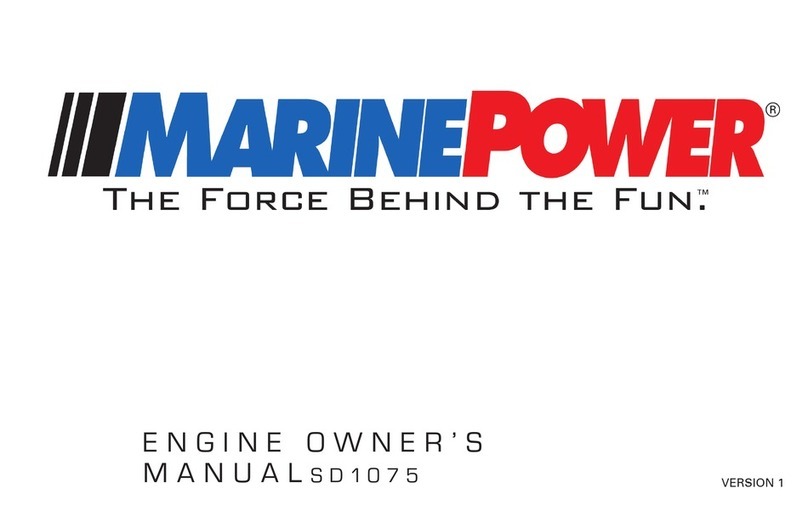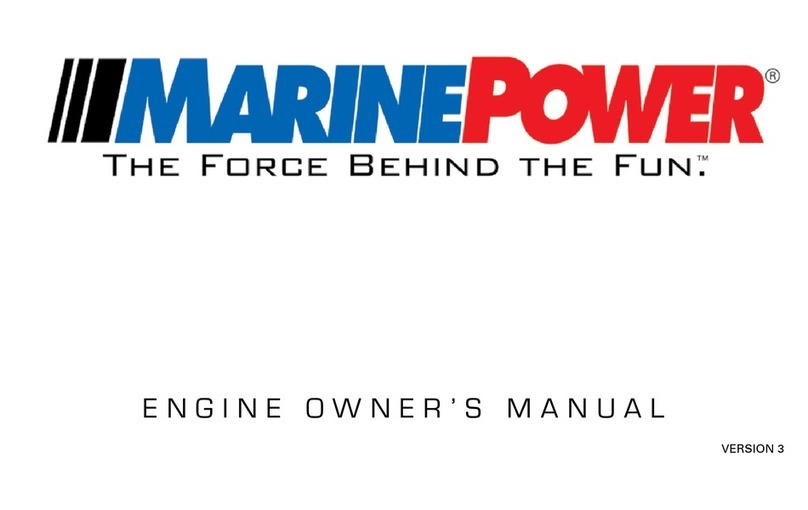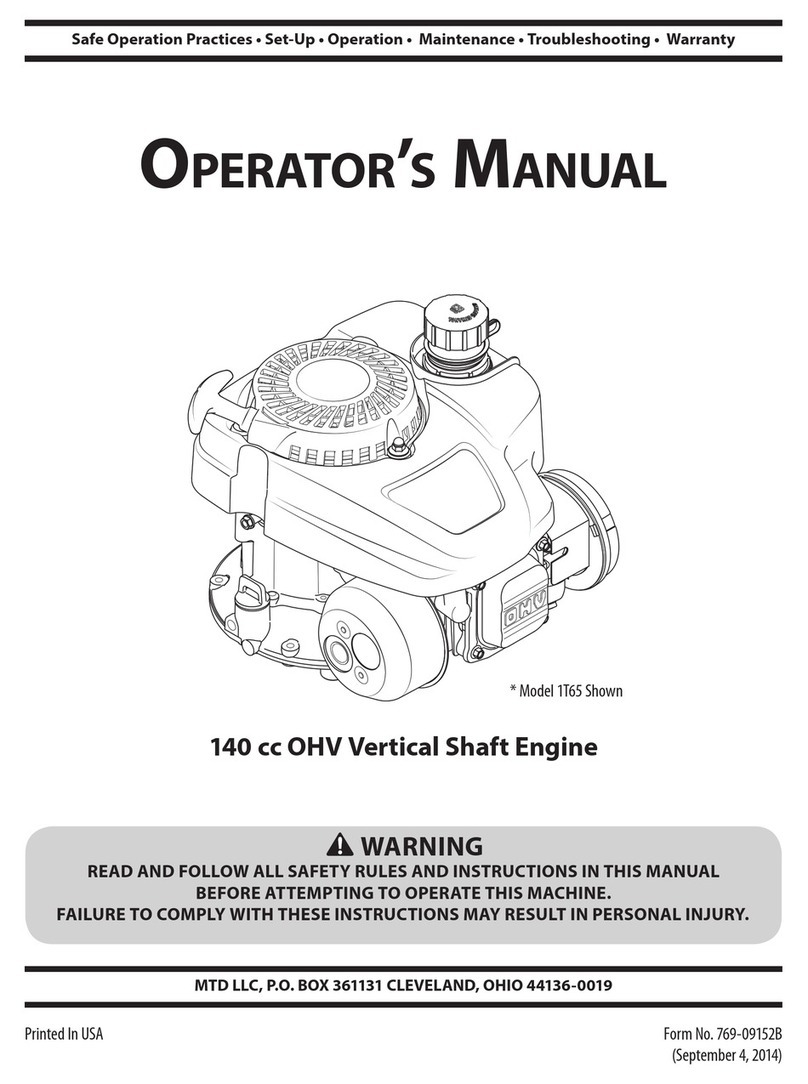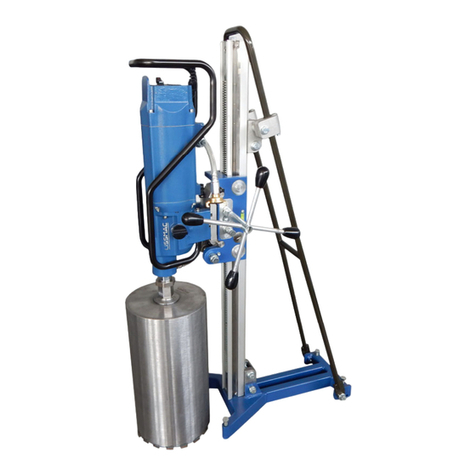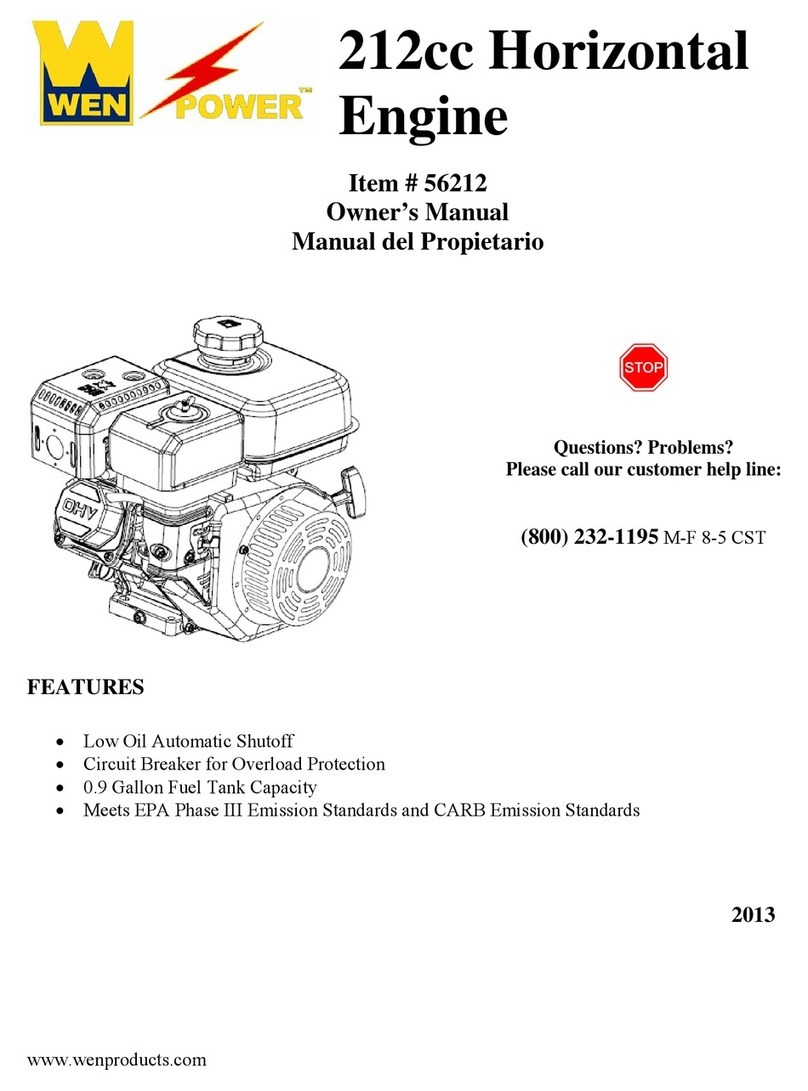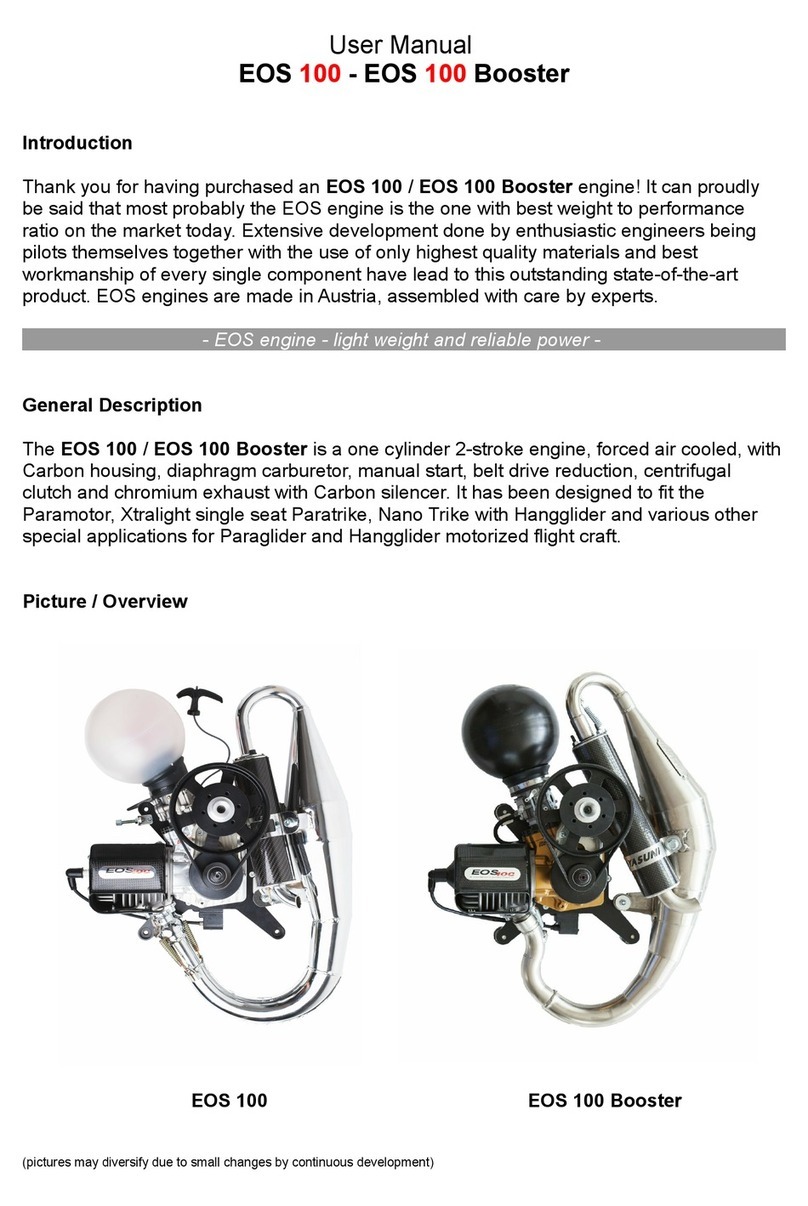Marine Power BASE Series User manual

BASE AND PARPAC ENGINE MANUAL
VERSION 1

2www.MarinePowerUSA.com
1. Warranty
1. MARINE POWER (“the Company”) warranties each
new MARINE POWER BASE or PARPAC engine
properly registered with MARINE POWER to be free
from defects in material and workmanship.
2. The warranty period for a MARINE BASE OR
PARPAC engine is one (1) year parts AND BENCH
LABOR (MAXIMUM LABOR $500.00) only from
the date of sale. Receipt of a properly completed
Warranty Registration / Sea Trial form must be re-
ceived by Marine Power for any warranty claim to
be honored. All subsequent purchasers must inform
MARINE POWER in writing and with a payment of
a $300.00 transfer fee, of the sale of the engine to
continue the warranty. If notification is not received
by MARINE POWER within fifteen (15) days of the
resale; the warranty will be null and void.
3. In the case of commercial use, this Warranty shall
be in effect for ninety (90) days from the date of
startup, but no longer than six (6) months from
the first date of retail purchase. MARINE BASE
and PARPAC warranty claims will be for parts
and BENCH labor only. Total labor charges cannot
exceed $500.00.
4. The Company’s obligation is limited to repairing
or replacing those parts defective in material and
workmanship only. At Marine Power’s option, it
may replace such part with a part of equal quality
as shall be necessary to remedy any malfunction
resulting from a defect in material or workmanship
as covered in this Warranty. MARINE POWER will
make all necessary repairs under this Warran-
ty free of charge at the MARINE POWER factory.
Optionally, MARINE POWER may provide for the
repair or replacement of any defective part at the
selling dealership or a service center of MARINE
POWER’s choice. MARINE POWER will make
payment reimbursements for labor to replace such
part as previously provided in the then current flat
rate manual.
5. MARINE POWER, distributor, or dealer must be
advised in writing of any warranty related problem
prior to the expiration of the Warranty.
6. This Warranty will not apply to:
A) Use of an accessories or parts not manufactured
or sold by MARINE POWER.
B) Neglect, failure to follow maintenance sched-
ules, accident, abnormal operations, misuse,
negligence, improperly maintained, improperly
operated or installed, racing, or engine mod-
ification. Problems arising from installation,
application, exhaust to engine, fuel lines to the
engine, propping, cooling to the engine or engine
damage due to defective electrical hookups.
C) Rust, corrosion or effects of weather.
D) Damage caused by water entering engine via the
intake, exhaust or submersion.
E) Detonation or operation with fuels, oils or
lubricants which are not suitable for use with
this product. Detonation causes: Poor fuel
quality, overloading of engine, improper gear
or propeller selection, engine overheating,
excessive back pressure, incorrect ignition
timing, excessive total timing.
F) Reimbursement for: haul-out, launch, towing,
storage charges, rental charges of any type,
inconvenience of any type, loss of time or
income, expense of returning a MARINE POWER
product to a service facility, towing, lodging, loss
or damage to personal property.
G) Carburetor after the first five (5) hours of opera-
tion. Fuel, air and float adjustments are part of
the installation.
7. Reasonable access must be provided to the
product for warranty service. Removal and/or
replacement of boat partitions or material because
of boat design for necessary access to the product
is not covered.
8. Warranty service must be requested by delivering
the product for inspection to the retailer from whom
the product was purchased or any convenient
marine service center.
9. Proof of Warranty must be provided at time of

3www.MarinePowerUSA.com
1. Warranty
request for warranty service. A properly completed
Warranty Registration / Sea Trial form must be on
file with MARINE POWER.
10. Distributors, dealers and service providers are not
agents for MARINE POWER. The Company’s obliga-
tion under this warranty is strictly and exclusively
limited to the repair or replacement of defective
parts and does not authorize any person to create
for it any obligation of liability in connection with
this product nor does the Company assume any
obligation due to incorrect or defective installation
by the dealer.
11. All incidental and/or consequential damages are
excluded from this Warranty. Implied warranties
are limited to the life of this Warranty. All implied
warranties including merchantability, fitness for a
particular purpose, or otherwise are disclaimed in
their entirety after expiration of the appropriate one
(1) year warranty period. This Warranty gives you
specific rights, and you may also have other rights,
which may vary from state to state. Some jurisdic-
tions do not allow the exclusion or limitation of
incidental or consequential damages, so the above
limitation or exclusion may not apply to you.
12. MARINE POWER reserves the right to change or
improve design of any product previously assem-
bled without notice and without obligation.
13. In the event that a warranty claim is required
outside of the continental United States, with the
exception of Alaska and Hawaii, there may be
additional charges to the engine owner. Any/
All litigation must be filed within the State of
Louisiana, Parish of Tangipahoa. MARINE
POWER will not warrant any engine sold outside the
continental United States, with the exception of
Alaska and Hawaii, unless competent and trained
personnel and available to provide service to the
engine as solely determined by Marine Power.
Note: Check flywheel ring gear position
before installing in boat. Bottom
mount starters require forward
positioned ring gears. Top mount rear
entry starters require rear positioned
ring gears.

4www.MarinePowerUSA.com
2. Engine Identication
Engine Type
Crankshaft Horsepower* (HP/KW)
Displacement (Liter/CID)
Bore & Stroke (Inches)
Compression Ratio
Maximum RPM @ Wide Open Throttle
Idle RPM in Forward Gear
Fuel Pump Pressure
Oil Pressure @ 2000 RPM
Minimum Oil Pressure @ Idle
Thermostat (Raw Water)
Thermostat (Fresh Water)
Spark Plug Type
Spark Plug Gap
Timing @ Idle RPM
Total Max. Timing Advance @ 4000 RPM
Firing Order
Recommended Battery Rating
Crankcase Oil**
Crankcase Oil Capacity (Aluminum Pan)
Crankcase Oil Capacity (Sheet Metal Pan)
* Rated by Marine Power, Inc. in accordance with SAE J607, Prop Shaft rating will vary according to drive used.
** Synthetic oil may be substituted.
3.0L / 181 CID
Inline 4
140/104
3.0L/181 CID
4.00 x 3.60
9.25:1
4300 - 4600 RPM
650 - 800 RPM
4 - 7 PSI
20 - 60 PSI
10 PSI
143° F (62° C)
160° F (71° C)
AC 42 LT
.035 IN (0.9MM)
2° (ADTC)
19°
1-3-4-2
Min. 350 amps (CCA)
15W-40
Approximately 4 quarts
5.7L / 350 CID (Carbureted)
V8
315/235
5.7L/350 CID
4.00 x 3.48
9.4:1
4300 - 4600 RPM
650 - 800 RPM
4 - 7 PSI
20 - 60 PSI
10 PSI
143° F (62° C)
160° F (71° C)
AC MR43LTS
.035 IN (0.9MM)
8° (BDTC)
26°
1-8-4-3-6-5-7-2 (LH)
1-2-7-5-6-3-4-8 (RH)
Min. 350 amps (CCA)
15W-40
Approximately 6 quarts
Approximately 5 quarts
5.7L / 350 CID (MPI)
V8
325/342
5.7L/350 CID
4.00 x 3.48
9.4:1
4200 - 5000 RPM
650 - 800 RPM
4 - 7 PSI
20 - 60 PSI
10 PSI
143° F (62° C)
160° F (71° C)
AC 41-101
.060 IN (1.52MM)
10° (BDTC)
29°
1-8-4-3-6-5-7-2 (LH)
1-2-7-5-6-3-4-8 (RH)
Min. 350 amps (CCA)
15W-40
Approximately 6 quarts
Approximately 5 quarts
7.4L / 454 CID (Std. Carbureted)
V8
330/246
7.4L/454 CID
4.25 x 4.00
8.0:1
4300 - 4600 RPM
650 - 800 RPM
4 - 7 PSI
20 - 60 PSI
10 PSI
143° F (62° C)
160° F (71° C)
AC MR43T
.035 IN (0.9MM)
0° (BDTC)
20°
1-8-4-3-6-5-7-2 (LH)
1-2-7-5-6-3-4-8 (RH)
Min. 350 amps (CCA)
15W-40
Approximately 10 quarts
Approximately 8 quarts

5www.MarinePowerUSA.com
2. Engine Identication
Engine Type
Crankshaft Horsepower* (HP/KW)
Displacement (Liter/CID)
Bore & Stroke (Inches)
Compression Ratio
Maximum RPM @ Wide Open Throttle
Idle RPM in Forward Gear
Fuel Pump Pressure
Oil Pressure @ 2000 RPM
Minimum Oil Pressure @ Idle
Thermostat (Raw Water)
Thermostat (Fresh Water)
Spark Plug Type
Spark Plug Gap
Timing @ Idle RPM
Total Max. Timing Advance @ 4000 RPM
Firing Order
Recommended Battery Rating
Crankcase Oil**
Crankcase Oil Capacity (Aluminum Pan)
Crankcase Oil Capacity (Sheet Metal Pan)
* Rated by Marine Power, Inc. in accordance with SAE J607, Prop Shaft rating will vary according to drive used.
** Synthetic oil may be substituted.
7.4L / 454 CID (MPI)
V8
340/253
7.4L/454 CID
4.25 x 4.00
9.0:1
4200 - 4600 RPM
650 - 800 RPM
39 PSI
20 - 60 PSI
10 PSI
143° F (62° C)
160° F (71° C)
AC MR43T
.035 IN (0.9MM)
0° (BDTC)
-
1-8-4-3-6-5-7-2 (LH)
1-2-7-5-6-3-4-8 (RH)
Min. 350 amps (CCA)
15W-40
Approximately 10 quarts
Approximately 8 quarts
7.4L / 454 CID (Premium HP)
V8
380/282
7.4L/454 CID
4.25 x 4.00
8.6:1
4600 - 5000 RPM
650 - 800 RPM
-
20 - 60 PSI
10 PSI
143° F (62° C)
160° F (71° C)
AC MR43T
.035 IN (0.9MM)
12° (BDTC)
30°
1-8-4-3-6-5-7-2 (LH)
1-2-7-5-6-3-4-8 (RH)
Min. 350 amps (CCA)
15W-40
Approximately 10 quarts
Approximately 8 quarts
8.2L / 502 CID (Carbureted)
V8
400/298
8.2L/502 CID
4.47 x 4.00
8.75:1
4300 - 4800 RPM
650 - 800 RPM
4 - 7 PSI
20 - 60 PSI
10 PSI
143° F (62° C)
160° F (71° C)
AC MR43T
.035 IN (0.9MM)
12° (BDTC)
30°
1-8-4-3-6-5-7-2 (LH)
Min. 350 amps (CCA)
15W-40
Approximately 10 quarts
Approximately 8 quarts
8.2L / 502 CID (MPI)
V8
420/313
8.2L/502 CID
4.47 x 4.00
8.75:1
4600 - 5000 RPM
650 - 800 RPM
39 PSI
20 - 60 PSI
10 PSI
143° F (62° C)
160° F (71° C)
AC MR43T
.035 IN (0.9MM)
12° (BDTC)
-
1-8-4-3-6-5-7-2 (LH)
Min. 350 amps (CCA)
15W-40
Approximately 10 quarts
Approximately 8 quarts

6www.MarinePowerUSA.com
Water Can Enter the Engine Cylinders
Through the Intake or Exhaust System.
Beware of these situations:
1. Following Wakes: Sudden slow-downs may cause the
boat wake to flow over the transom of your boat. Most
engine hatch covers are not watertight. Water spilling
into the engine compartment can easily enter the air in-
take, especially if the engine is running.
2. Engine Shutdown: Sudden engine shutdown while the
boat is moving may force water into the exhaust system.
3. Improper Installation: Refer to exhaust pipe section. An
exhaust system without flappers and the specified incline
increases the likelihood of water entering the engine.
4. Improper Hoisting: Operators are sometimes tempted to
reduce hoisting time for propeller changes by hoisting
only the boat stern. Such hoisting can cause residual wa-
ter in the exhaust system to enter engine cylinders.
Water entering engine cylinders will cause the engine to lock
because water does not compress. To remedy this situation,
take the following steps:
1. Change engine oil and filters.
2. Remove all spark plugs.
3. Remove coil wire.
4. Crank engine for 15 seconds.
5. Replace spark plugs and reattach coil wire.
6. Start engine - if there are any abnormal sounds STOP
ENGINE immediately and contact your MARINE POWER
dealer.
Water Inversion
Water inversion is water that is pulled back into the exhaust
which usually ends up in the piston cylinder. Most of the time
this happens under the following conditions:
• Shutting off engine at high RPM’s.
• Water comes up the exhaust after a quick slowdown.
• Long periods of idling.
• Exhaust drop not sufficient.
Usually the water is not found until the next time the boat is
used. In some cases, this may not be for weeks. In the case
of a salt water environment this is catastrophic due to the
rusting.
To minimize the problem MARINE POWER requires the instal-
lation of flappers at the transom and in the exhaust hose just
after the exhaust riser or elbow.
Detonation and/or Pre-Ignition
Detonation is most commonly known as “pinging”, “spark
knock” or “fuel knock”. It is the abnormal combustion of the
fuel which causes the fuel to explode severely within the
combustion chamber.
In a four-cycle engine, normal combustion or burning starts
at the spark plug and a wave of flames move across the
combustion chamber. This results in an even pressure rise in
the combustion chamber which pushes the piston downward.
Detonation begins as normal combustion with the spark-
ignited flame progressing across the combustion chamber
while applying the heat and pressure to the unburned portion
of fuel. Instead of continuing to burn evenly, the last portion of
the fuel explodes violently which in turn cases overheating of
the pistons, valves and spark plugs.
This may occur at any speed and is not often detected, serious
and tragic engine damage may occur.
There are many causes of detonation, with the most common
being the use of a low-octane gasoline or improperly timed
ignition. Detonation may also occur when using the proper
octane gasoline if engine maintenance has been neglected.
Possible causes include:
1. Poor or improper fuel quality/octane.
2. Improper initial ignition timing setting.
3. Improper propeller selection.
4. Engine overload, such as operating twin-engine boat with
only one engine.
5. Improper cooling operation resulting in engine overheating.
6. Fuel starvation or vapor lock resulting from poor fuel
quality/lean out.
7. Malfunctioning carburetor causing lean mixture.
8. Operating engine that is out of proper tune, dead cylinder,
3. Precautions/Instructions

7www.MarinePowerUSA.com
defective distributor cap.
9. Excessive exhaust backpressure by restricted exhaust
mufflers or outlets.
Proper Engine Break-In
CAUTION First twenty-five (25) hours vary the RPM. Avoid
sustained periods of wide open throttle. Some EFI engines
will not reach WOT until engine is up to normal operating
temperatures.
AT NO TIME SHOULD THE ENGINE BE OPERATED
BEYOND THE SPECIFIED MAXIMUM RPM RATING.
FAILURE TO ADHERE TO THERE RECOMMENDATIONS
WILL VOID THE TERMS OF WARRANTY.
To insure maximum life of your MARINE POWER engine, the
following engine break-in schedule is recommended:
First hour - Perform sea trial.
IMPORTANT! During the break-in period, pay close attention
to the following steps.
1. OIL LEVEL: Check the oil level before each engine start
up and every eight (8) hours of continuous operation. It
should be understood that internal combustion engines
will use a certain amount of oil during operation as a
cooling and lubricating agent (especially during break-in
period). Oil consumption should decrease after approxi-
mately 100 hours of operation.
IMPORTANT! The space between “FULL” and “ADD” marks
on the dipstick represent one quart. It is not necessary to add
oil unless the level is at or below the “ADD” mark.
CAUTION Engine dipstick level may change due to the angle
of installation. Ensure that “high” oil level is properly marked
accordingly.
CAUTION When adding crankcase oil, DO NOT OVERFILL. If
crankcase is overfilled, it will cause foaming or aeration of oil
in the oil pan. This will effect oil pressure which may result in
severe internal engine damage.
2. VOLTMETER: Normal reading is 13.0 - 14.5 volts at 2,000
RPM.
3. OIL PRESSURE: Not less than 10 PSI at idle.
4. NORMAL OPERATING TEMP: Raw water cooling - less
than 165 degrees. Closed cooling - between 160 and 190
degrees.
5. IDLE RPM: Normal reading is 650 - 800 RPM in gear.
Note: For Jetpac applications, normal reading is 800 -
1,000 RPM.
6. THROTTLE AND SHIFT CONTROLS: Check that movement
is not constrictive. Verify that linkage is adjusted so that
engine may reach Wide Open Throttle (WOT).
7. EXHAUST, OIL, WATER AND FUEL SYSTEM: Inspect for
leaks. Be sure to check riser bolt tightness after 10 hours
and every 50 hours of operation. Refer to Maintenance
Schedule.
It is very important to re-tighten exhaust manifold riser
bolts after 10 hours of operation. Failure to do so can cause
non-warrantable engine damage.
General Information
ENGINE ROTATION
Directional references used in this section are given as if
standing behind the boat, looking forward:
• Front of boat is bow.
• Rear of boat is stern.
• Right side is starboard.
• Left side is port.
The raw water (or seawater) pump is located at the front of
the engine on the crankshaft pulley. Engine rotation can be
determined by looking at the stern end of the engine and
observing the flywheel rotation. Do not assume engine
rotation by looking at the propeller rotation; it may not be the
same. This information is critical when ordering parts for your
engine.
Left Hand Engines: CCW or Normal Rotation Right Hand
Engines: CW or Opposite Rotation.
PROPELLER WARNING
WARNING! MARINE POWER does not warranty items
damaged due to detonation. The propeller selected should
allow the engine to operate at or near the recommended
wide open throttle RPM range with a normal load. Wide Open
Throttle RPM range is listed in Engine Identification Section.
3. Precautions/Instructions

8www.MarinePowerUSA.com
WARNING! Using a propeller too large will not allow the
engine to reach its rated RPM range which will create an over-
loaded condition and possible destructive detonation that can
be harmful to the engine’s performance and life.
PROPELLER INFORMATION
Diameter, pitch or coupling of a propeller will affect
engine RPM and boat performance. Configuration of the blade
also effects performance. Even propellers from different
manufacturers with the same pitch and diameter will perform
differently.
Testing for a correct propeller is accomplished by operating
the boat (with an average load) at Wide Open Throttle (WOT)
RPMs should be at the high end of the specified range and
checked with an accurate tachometer. This will allow the
engine not to fail below the RPM specified range under a
heavy load condition. If the engine RPM is above or below the
specified range, a change in the diameter and/or pitch of the
propeller is required. Newly installed engines operating 100
- 300 RPM below wide open throttle is usually a propeller
problem.
Delco EST Ignition
USING THE TIMING TOOL: Carbureted Engine.
For EFI Engines - Refer to original manufacturer’s instructions
but verify that engine is not timed outside of specifications
noted in this manual.
The 3.0 liter (181CID) does not have to be timed unless the
distributor is moved during installation. It is timed at the
factory. IMPORTANT! The 3.0 engine is timed at minus 2
degrees, raising the timing will cause the engine to detonate
and blow cylinder head gaskets.
The timing tool is used in setting the initial engine timing on
MARINE POWER carbureted engines. This connector by-passes
the electronic spark timing of the engine and allows the initial
timing to be adjusted by rotating the distributor. Use the follow-
ing procedure (become familiar with entire procedure before
beginning):
1. Connect a timing light to the number one (1) spark plug
wire. Connect the timing light power lead to a 12 volt
power source. (DO NOT CONNECT TO 12 VOLTS ON
ALTERNATOR.)
2. Start engine and allow to warm to operating tempera-
ture. Space linkage so that engine idles at 1,000 - 1,200
RPM.
3. WHILE ENGINE IS RUNNING, install the timing tool
supplied with your engine into the terminal connector on
the distributor.
4. Loosen distributor clamp just enough to rotate distributor
in place.
Note: An adjustable timing light is required to set initial and
total timing.
5. Secure the bare wire and of the timing tool to battery
positive (+) voltage (the most convenient location of this
voltage is on the cranking motor solenoid.) If desired, a
suitable clip, such as an alligator clip may be permanently
attached to the bare wire end of the timing tool to hold
it in place. Once connected the engine idle will drop to
approximately 600 RPM. It is important that the initial
linkage spacing in Step 2 allows the engine to drop to
around 600 with the timing tool connected to 12 volts.
The step spacing may have to be adjusted so that the
engine does settle at 600 RPM after connecting the tool.
6. Rotate distributor to set mechanical timing.
REFER TO THE APPROPRIATE “ENGINE IDEN-
TIFICATION” SECTION OF THIS MANUAL FOR
CORRECT TOTAL AND INITIAL TIMING FOR YOUR
ENGINE. IMPORTANT: The 3.0 engine is timed at
minus 2 degrees, raising the timing will cause
the engine to detonate and blow cylinder head
gaskets.
7. Tighten distributor clamp to hold in position when initial
timing is obtained.
8. Recheck timing.
9. Remove the timing tool from distributor.
10. Check total timing at 4,000 RPM. (See Engine Identifica-
tion Section.)
11. Disconnect and remove the timing light.
Fuel Lines
IMPORTANT! In repower applications, inspect all fuel
lines for possible restrictions. Fuel tanks should be installed
3. Precautions/Instructions

9www.MarinePowerUSA.com
below the height of the fuel system. It is recommended that an
anti-siphon valve be included in the fuel tank.
A 3/8” minimum (inner-dimension) “Type A1” USCG Approved
tubing is recommended for the fuel line from the tank to the
engine for all 181/3.0L, 262/4.3L and 350/5.7L engines. All
7.4L and larger engines must be 1/2” minimum inner dimen-
sion. It should be adequately secured and provided with a
flexible section near the engine to reduce vibration to the line.
Fittings for the tubing should conform to current Coast Guard or
American Boating & Yacht Council standards. It is also
recommended that older copper fuel lines be replaced with an
approved fuel line.
Fuel tanks should be of a size adequate with the full require-
ments and should be anchored securely and vented in such a
manner to conform to Coast Guard regulations. The fuel tank
filling arrangements should conform to all safety regulations,
and must be outboard. The installation of an approved fuel
shut off valve at the tank is mandatory.
Verify that carbureted engines have 5 - 7 psi fuel pressure.
EFI engine fuel pressure should meet original manufacturers
specifications. WARNING: INADEQUATE FUEL PRESSURE
WILL DESTROY A NEW ENGINE.
Crankcase Ventilation
Open vent tubes maybe routed directly to flame arrestor. If
PVC valves are used, they must be routed to a vacuum port on
the carburetor base or intake manifold.
Exhaust Piping
IMPORTANT! The boat manufacturer or installing dealer (or
individual) is responsible for properly locating the engine and
installing the exhaust system. Improper installation may allow
water to enter the exhaust manifolds and engine cylinders and
severely damage the engine. Damage caused by water in the
engine will not be covered by the MARINE POWER Warranty,
unless this damage is a result of defective parts or workman-
ship by MARINE POWER.
ENPACS, SPORTPACS, and TOWPACS are equipped with a
wet exhaust system in which exhaust is mixed with water in
the exhaust risers. This water cools the exhaust and allows
the use of heat resistant rubber hose on the riser outlets.
Follow these general guidelines when designing and install-
ing the exhaust system.
Use heat resistant hose that complies with specifications SAE
J2006 or UL 1129 (ABYC standard). Exhaust hoses should be
4” on dual outlet systems. 8.2L and larger engines should use
5” on single outlet systems.
Sharp bends should be avoided.
Exhaust hoses should be connected straight on the riser
outlets.
Exhaust back pressure test should be preformed to ensure
that exhaust components are adequately sized. Exhaust back
pressure should be between 1-3 psi. Some back pressure is
necessary to prevent water intrusion. Do not go below 1 psi.
Exhaust risers must be the suggested distance above the
water line. Install riser spacers if necessary.
A minimum of 18” of exhaust hose must be installed
between the exhaust risers and the collector, Y-pipe,
muffler or first angular fitting. This portion of the
exhaust hose must have a downward slope of 1-1/4”/ft.
for conventional inboards and a downward slope
of 7/8”/ft. for V-drives. Some OEM installations may
different from these specifications but these installations
have been carefully evaluated by MARINE POWER and the
OEM.
After the first 18” the exhaust system must have a drop of
1/2”/ft. Measure exhaust riser height as shown. Minimum
exhaust riser height should be 15” on 7.4 and 8.2L engines.
All others should be 13”.
The slope in the exhaust hose and components must be routed
so that no low point exists in the system where water may
be retained. The muffler, collector and exhaust hoses must be
adequately supported for proper routing and to prevent over-
stressing the exhaust manifolds and risers.
Internal flappers may be required on naturally aspirated 7.4
and 8.2L engines.
Applications with through transom exhausts must be equipped
with exhaust flappers to prevent the reverse flow of water into
the engine. Exhaust outlets should be above the water line
with the boat at rest to minimize engine back pressure.
Every exhaust connection should be secured with at
least two hose clamps. The clamps should be stainless
steel and at least 1/2” wide.
3. Precautions/Instructions

10 www.MarinePowerUSA.com
Scheduled Maintenance By Owner
* Engine Start-Up Each Day and Once Every Eight (8) Hours of Operation.
Service Engine After Every 50 Every 100
Startup 10 Hours of Hours of Hours of
Each Day Operation Operation Operation
Check Engine Oil Level * 33
Inspect Fuel Lines and Connections for Leaks 33
Check Coolant Level in Tank (If Equipped with Closed Cooling) 33
Inspect and Clean Sea Strainer (If Equipped) 33
Inspect Entire Power Package for Leaks (Water, Fuel, Oil, Exhaust, etc.) 333
Inspect Belts for Tension and Wear 333
Inspect Battery (Terminals and Fluid Levels) 333
Check Battery Connection to Engine 333
Touch Up Exterior Surface with Marine Power Paint 333
Inspect Zinc Anodes in Heat Exchanger for Deterioration (If Equipped with Closed Cooling) 333
Check Power Steering Fluid (If Equipped) 3
Check Transmission Fluid Level 333
Lubricate Starter Pinion and Shaft 33
4. Engine Maintenance

11www.MarinePowerUSA.com
4. Engine Maintenance
Scheduled Maintenance By Qualified Technician
Service Engine After Every 50 Every 100
Startup 10 Hours of Hours of Hours of
Each Day Operation Operation Operation
Change Engine Oil and Filters 333
Change Filter on Fuel/Water Separator 33
Check Engine Mounts (Tightness) 333
Check Riser and Manifold Bolts for Tightness 3333
Check for Loose, Damaged or Missing Engine Parts 33
Check Wire Harness Plugs for Corrosion and Connections 33
Inspect Distributor for Cracks or Deterioration 33
Check Condition of Spark Plugs (Replace if Necessary) 33
Inspect Hoses for Deterioration 33
Replace Impeller in Seawater Pump 33
Check Propeller and Shaft Alignment 3
Check and Adjust Ignition Timing (Carbureted Engine Only) 3
Check and Adjust Carburetor 3
Clean and Inspect Flame Arrestor and Crank Case Vent Hose 33
Clean and Inspect Carburetor Filter 33
Change Transmission Fluid 3
Change Coolant (If Equipped with Closed Cooling) 3
Clean Seawater Section of Heat Exchanger 3

Copyright 2016 Marine Power
All rights reserved. No part of this book may be reproduced or utilized in any form or by any means, electronic or mechanical, including photocopying,
recording or any information storage and retrieval system, without permission in writing from MARINE POWER HOLDING, LLC.
Marine Power 17506 Marine Power Industrial Park, Ponchatoula, LA 70454 USA www.MarinePowerUSA.com
This manual suits for next models
1
Table of contents
Other Marine Power Engine manuals
Popular Engine manuals by other brands
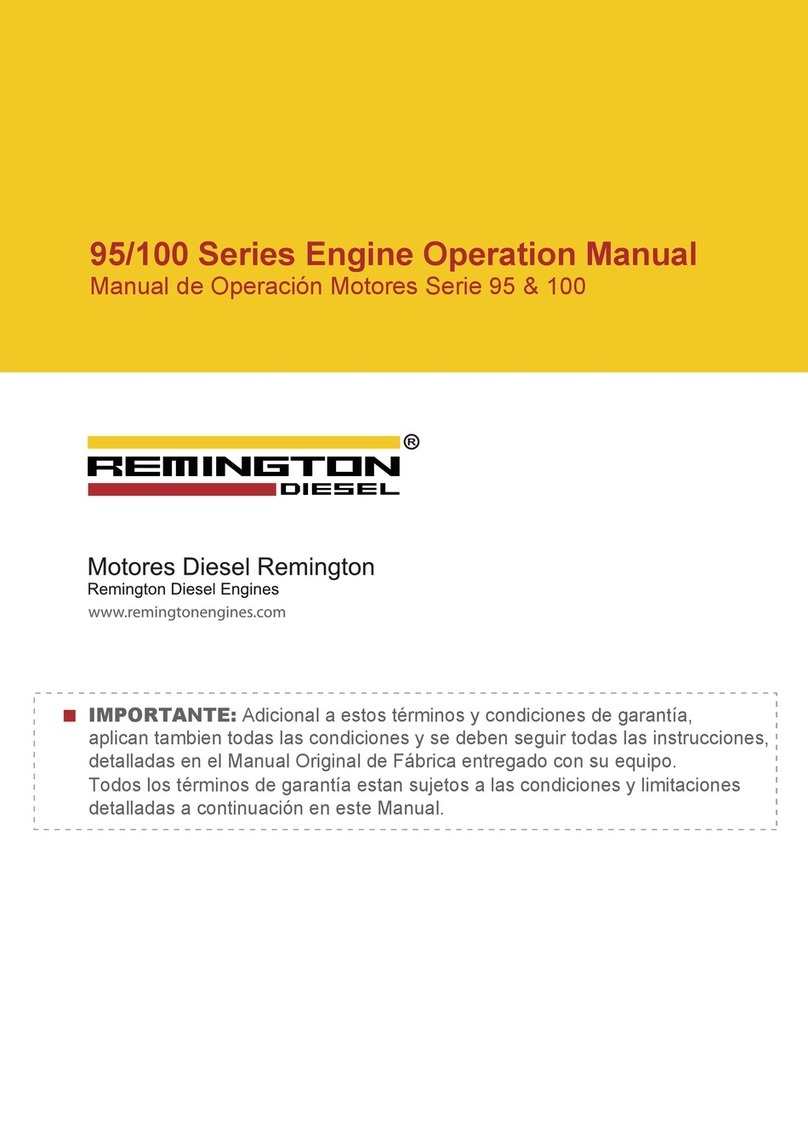
Remington
Remington 495 Operation manual

Lombardini
Lombardini 15 LD 500 Workshop manual

Briggs & Stratton
Briggs & Stratton Vanguard 430000 user manual
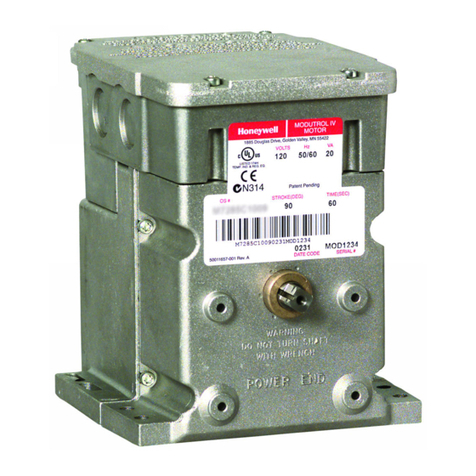
Honeywell
Honeywell Modutrol IV Series 61 manual
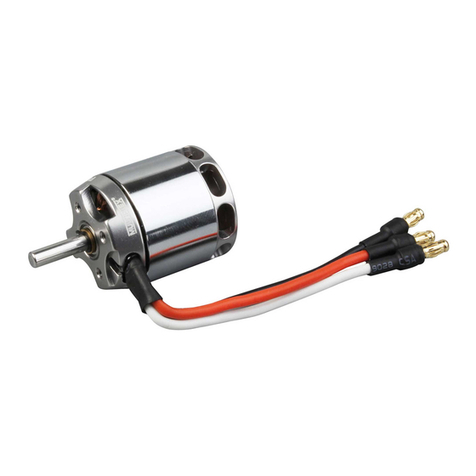
Multiplex
Multiplex PERMAX BL-O 2816-0850 F operating instructions
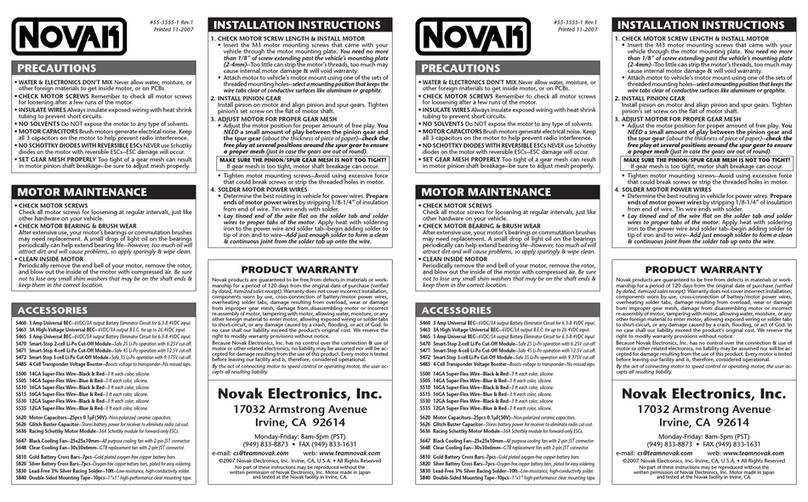
NOVAK
NOVAK FIFTY-FIVE - REV1 11-2007 installation instructions
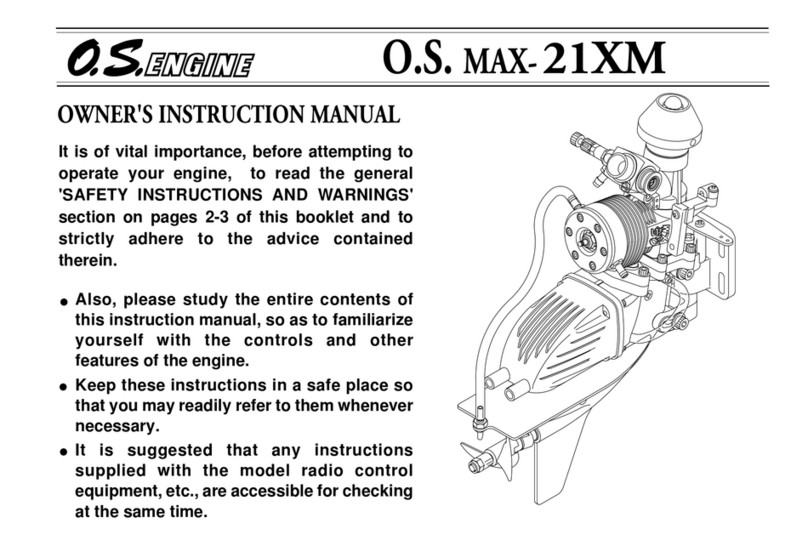
O.S. engine
O.S. engine MAX-21XM Owner's instruction manual
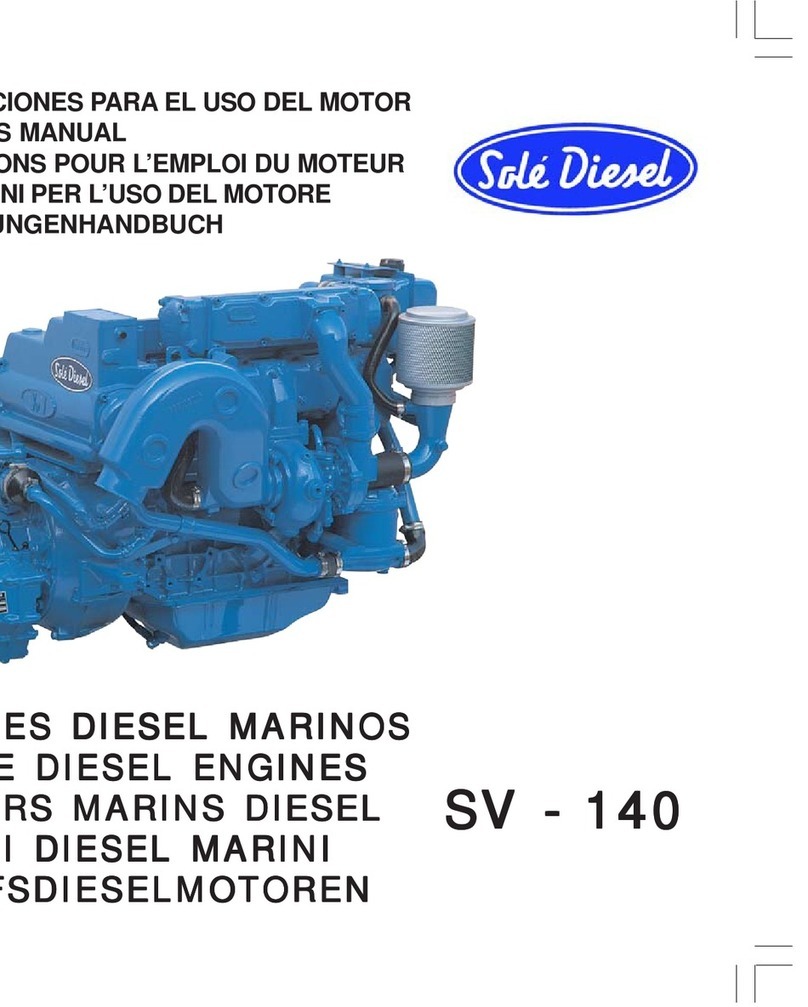
Sole Diesel
Sole Diesel SV-140 instruction manual
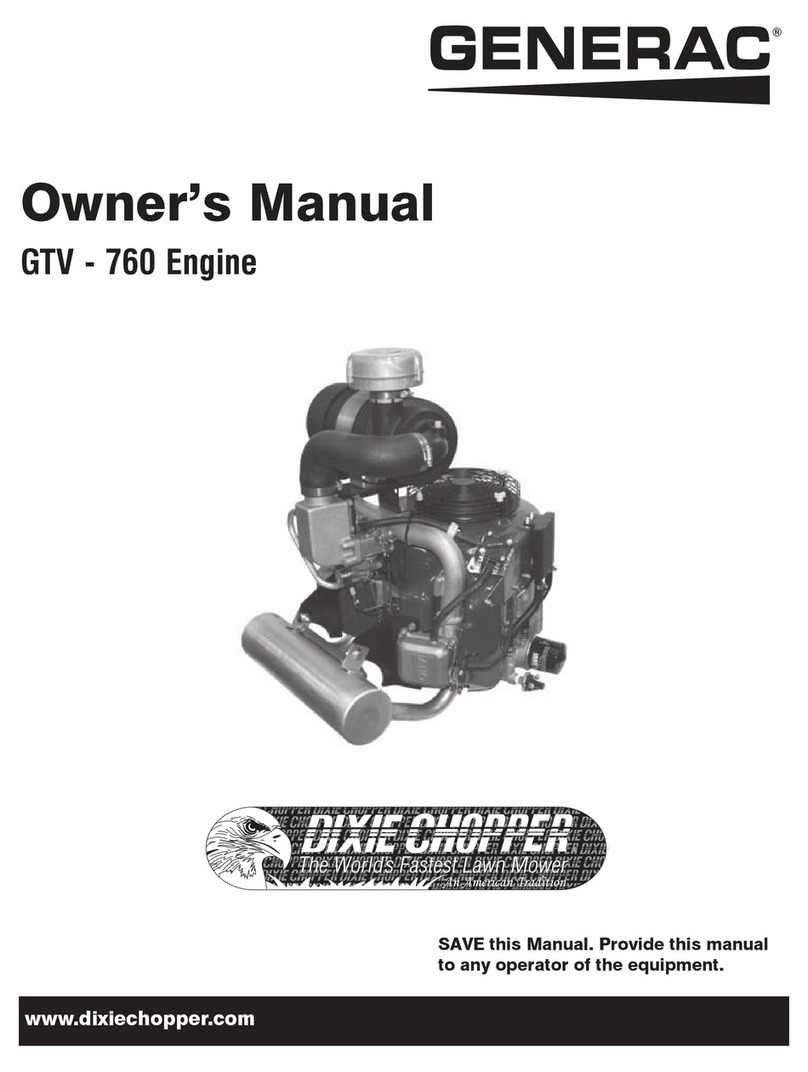
Generac Power Systems
Generac Power Systems GTV-760 owner's manual

Kohler
Kohler Command PRO EFI Service manual
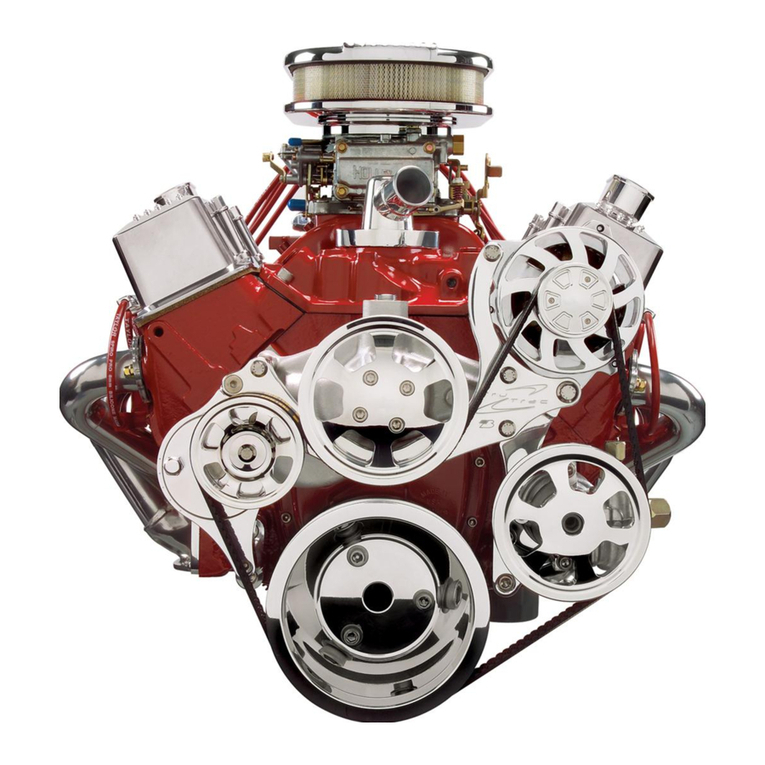
Billet Specialties
Billet Specialties Tru Trac 13225 installation manual

Kohler
Kohler Confidant ZT710 owner's manual
